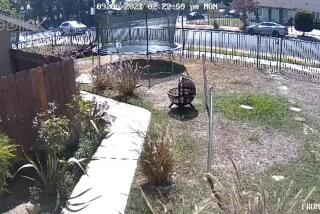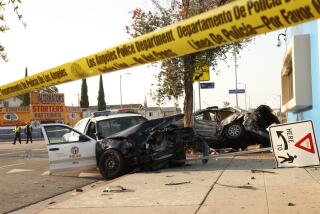ON-RAMP : On the Skids
- Share via
Anti-lock brake systems are designed to prevent car crashes; when they don’t, the systems can put the brakes on accident investigations.
See, anti-lock brakes, which allow wheels to continue rotating, often don’t leave skid marks. And skid marks are what police officers use to figure out a car’s speed, direction and movement before impact. Without this key evidence, a credible explanation of the crash is elusive, says Sgt. Tom Shelton, who heads accident investigation training for the California Highway Patrol.
“There are a number of cases where skid marks are going to be your case,” Shelton says. “Witnesses don’t perceive properly; they embellish.”
But when anti-lock brakes are involved, all that’s left behind are faint marks that are easily overlooked or misinterpreted, and that disappear within hours, not weeks.
As a result, authorities such as the CHP, which responded to 175,536 traffic collisions statewide last year, are changing the way they collect and analyze evidence. Torrance Police Officer Larry Davis recalls deducing a car’s minimum speed by noting that the air bag had deployed. Most air bags won’t inflate in crashes at less than 11 m.p.h., so the driver, who said she was traveling at a slower speed, was caught in a lie.
Ultimately, innovations such as anti-lock brakes, now offered on luxury and performance vehicles and expected to become a feature on standard cars in the future, could help improve the accuracy of investigations. “It’s going to force people in the accident reconstruction industry to pay more attention to detail,” Davis says.
For now, though, investigators say they’re just barely getting up to speed.
More to Read
Sign up for Essential California
The most important California stories and recommendations in your inbox every morning.
You may occasionally receive promotional content from the Los Angeles Times.













